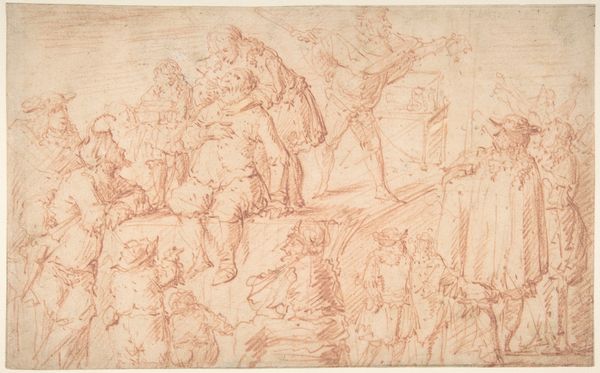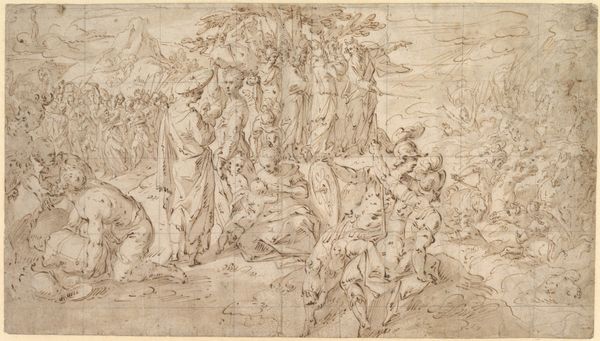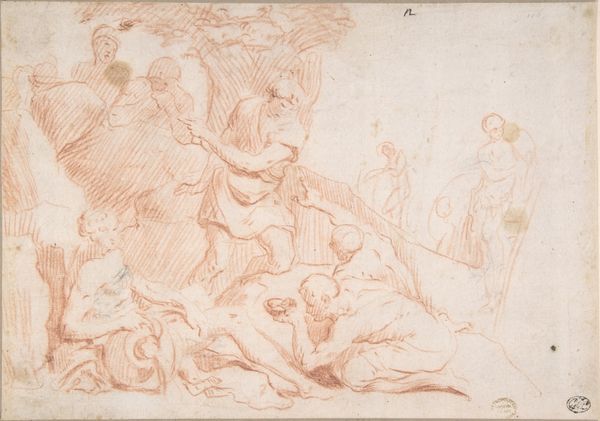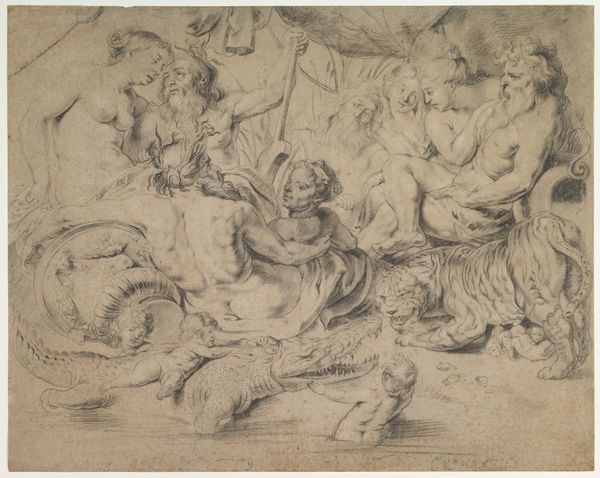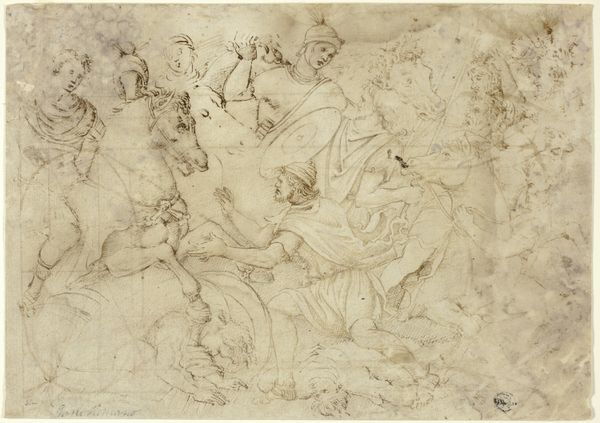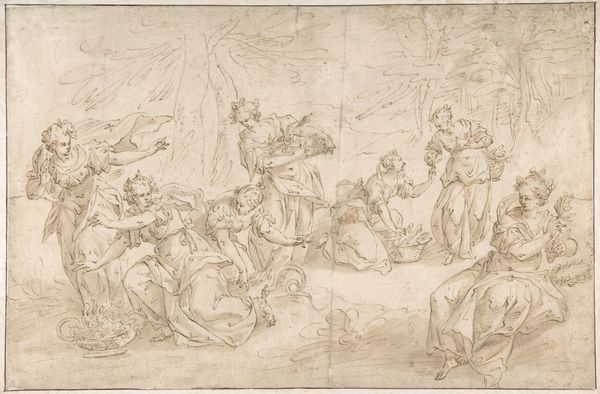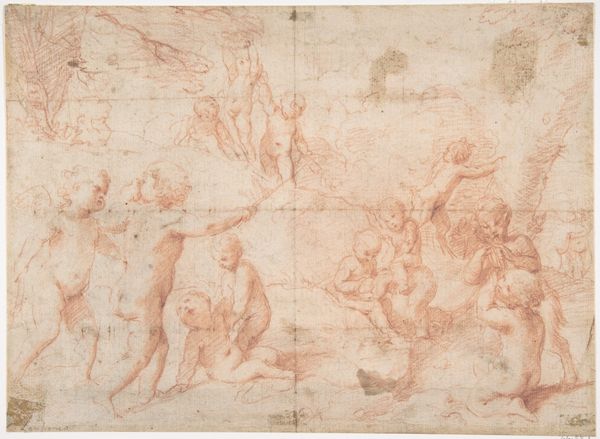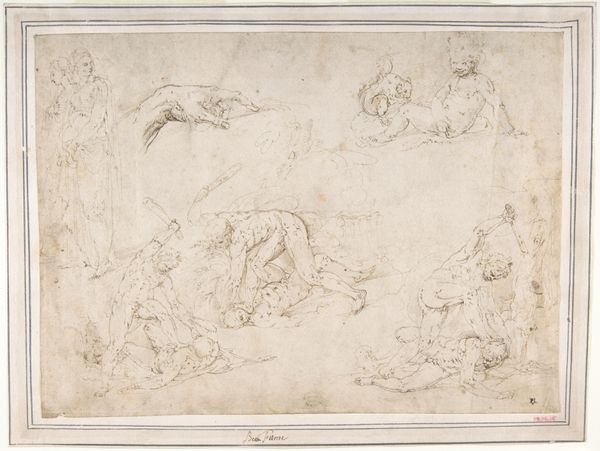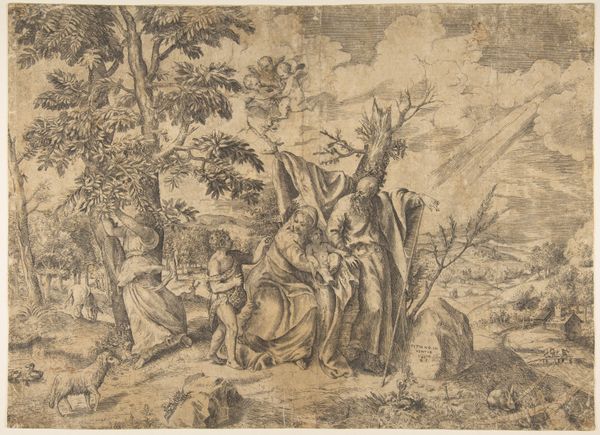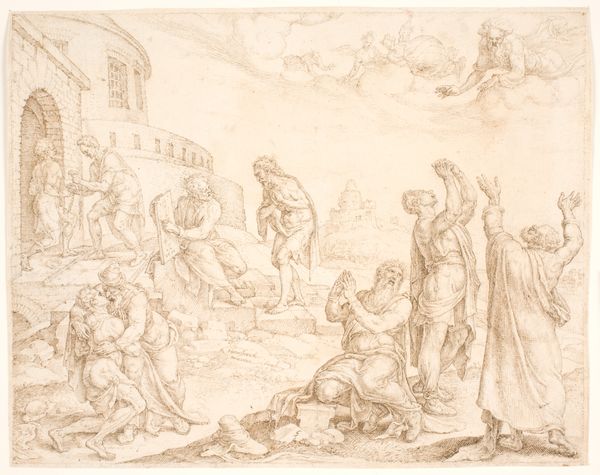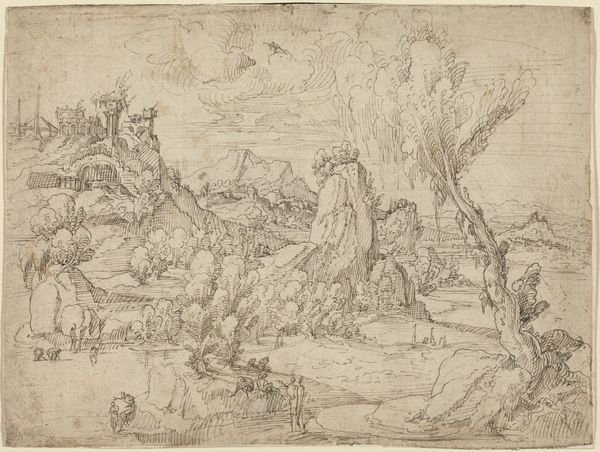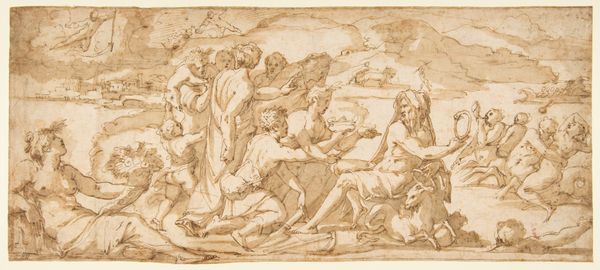
drawing, print, paper, ink, charcoal
#
drawing
# print
#
charcoal drawing
#
figuration
#
paper
#
11_renaissance
#
ink
#
genre-painting
#
charcoal
#
history-painting
#
academic-art
Dimensions: sheet: 8 x 12 3/8 in. (20.3 x 31.5 cm)
Copyright: Public Domain
Editor: We’re looking at "The Age of Iron," a drawing attributed to Alonso Berruguete, created between 1520 and 1530 using ink and charcoal on paper. It's currently housed at The Met. I'm immediately struck by the figures’ dynamic poses; they seem to be caught in the midst of some sort of violent action. What do you see in this piece? Curator: I see a brutal illustration of societal breakdown. Berruguete created this piece during a period of immense social and political upheaval in Europe. Looking at this work through a critical lens, particularly a feminist perspective, raises questions about the role of violence and power in shaping historical narratives. Notice the almost frenzied energy, the bodies intertwined in conflict, set against the backdrop of what seems to be a primitive landscape. What kind of power dynamics do you think are at play here? Editor: It feels very masculine and aggressive; the figures look as if they are defending some piece of territory, though its vague and lacks specific historical reference. Are we intended to understand them as heroic? Curator: That's where I push back against a straightforward art historical interpretation. Are they heroic, or are they enacting a foundational violence? Consider how images like this have been used to justify colonization, war, and other forms of oppression throughout history. Who gets to write history and whose stories get erased or glorified? Editor: So you’re saying the drawing itself is complicit in those narratives, regardless of Berruguete’s original intent? Curator: Precisely. The material conditions of the piece are fascinating as well. The use of ink and charcoal creates a sense of immediacy, a raw energy that mirrors the chaos of the scene. Think about access and power; drawings are preparatory and, at the time, more democratic than other artworks, but they also lay groundwork for works that perpetuate power imbalances. Editor: It's interesting to consider the implications of even the medium used, and to unpack how depictions of violence, even centuries old, continue to influence our understanding of power today. Thank you for your thoughts. Curator: My pleasure, it’s always beneficial to view pieces with a critical eye toward history and contemporary power structures.
Comments
No comments
Be the first to comment and join the conversation on the ultimate creative platform.
